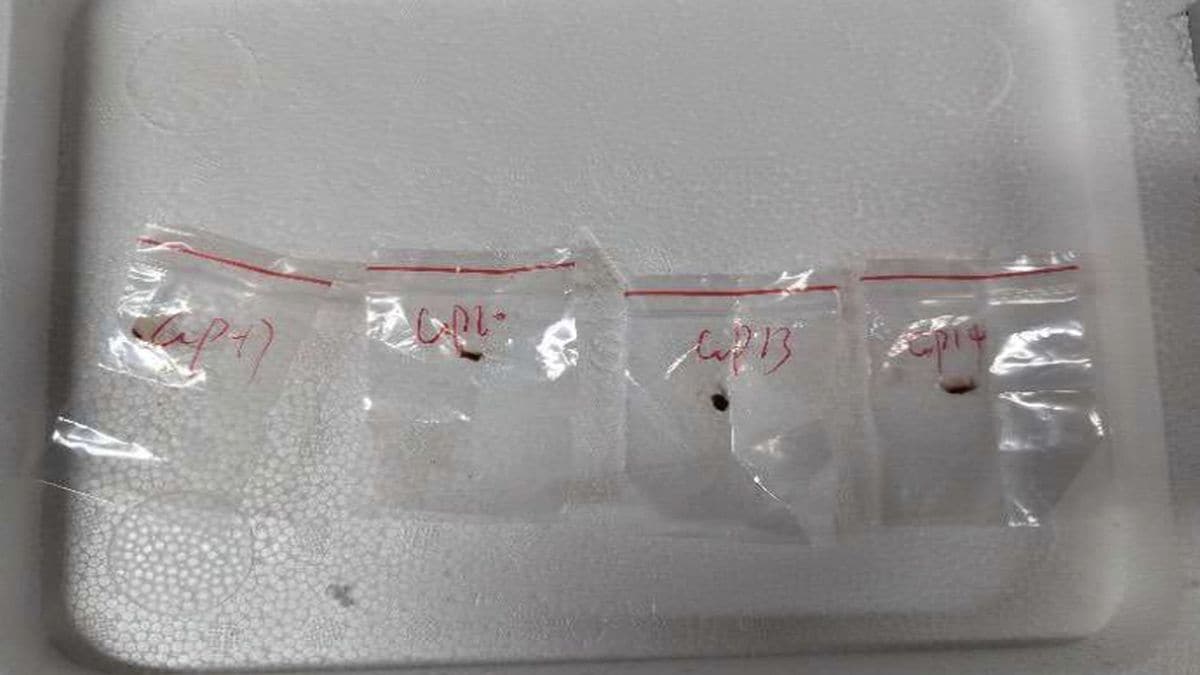We have often come across terms such as cyberterrorism and ecoterrorism. However, on Tuesday (June 3), a rare case of possible agroterrorism emerged from the United States when authorities charged two Chinese nationals for allegedly smuggling a fungus with authorities saying that the pathogen could be used as a biological weapon.
This incident has got people curious about agroterrorism — what exactly is it — and the dangerous fungus — Fusarium graminearum — that they are alleged to have smuggled from China into the United States.
Here’s what we have found out so far.
Why have 2 Chinese nationals been charged?
On Tuesday, the US Attorney’s Office for the Eastern District of Michigan announced that it has charged two Chinese nationals — Yunqing Jian (33), and Zunyong Liu (34) with conspiracy, smuggling goods, false statements, and visa fraud.
In their complaint, the justice department said that the duo were conspiring to smuggle a fungus called Fusarium graminearum into the United States that causes “head blight,” a disease of wheat, barley, maize, and rice.
“The alleged actions of these Chinese nationals, including a loyal member of the Chinese Communist Party, are of the gravest national security concerns,” US Attorney Jerome Gorgon Jr said.
According to the Federal Bureau of Investigation (FBI), Liu was turned away at the Detroit airport and sent back to China last July after changing his story during an interrogation about red plant material discovered in his backpack.
At first, he claimed ignorance about the samples but later admitted to a plan of using them for research at a University of Michigan lab where Jian worked.
The complaint further adds that both of them had worked on the fungus in China. Moreover, they found an article on Liu’s phone that was titled, “Plant-Pathogen Warfare under Changing Climate Conditions.”
Even messages between the two indicate that Jian was already tending to Fusarium graminearum at the campus lab before Liu was caught at the Detroit airport, the FBI said.
In a statement, the University of Michigan said it received “no funding from the Chinese government in relation to research conducted by the accused individuals” and that it has and will continue to “cooperate with federal law enforcement in its ongoing investigation and prosecution.”
“We strongly condemn any actions that seek to cause harm, threaten national security or undermine the university’s critical public mission,” the university said.
How deadly is this fungus?
US authorities have stated that the fungus — Fusarium graminearum — is a “potential agroterrorism” weapon according to scientific studies and is capable of causing billions of dollars in losses.
Scientific studies reveal that Fusarium graminearum, also known as gibberella zeae, is a harmful fungus that infects cereal crops like wheat, barley, oats, and corn. In fact, it is ranked among the five most destructive fungal pathogens that affect agroecosystems.
Experts note that it causes a disease known as Fusarium head blight (FHB) or “scab”, damaging grain quality and reducing crop yields. According to research, the fungus causes shifts in the amino acid composition of wheat, resulting in shrivelled kernels and contaminating the remaining grain.
In case of this fungus affecting wheat, brown, dark purple-black necrotic lesions will form on the outer surface of the spikelets — which is what the wheat ear breaks up into. In rice, it can turn affected seeds red and cause brown discolouration in certain areas on the seed or the entire seed surface. The surface of husks develop white spots that later become yellow. Infected grains are light, shrunken and brittle.
Research has revealed that Fusarium graminearum infects plants by entering through natural openings like stomata. After breaching the cuticle, the fungus spreads throughout the plant systemically.
One scientific paper reveals that Fusarium head blight reached “epidemic levels” in the US in the 1990s, hurting yields, price and seed quality. The disease is difficult to control with fungicides or resistant plant varieties, its authors had then written.
The fungus is also particularly dangerous for livestock and humans. It produces toxins that cause vomiting, liver damage and reproductive issues in people and animals that eat infected grains. Pigs are especially susceptible.
But what exactly is agroterrorism?
The FBI and the Department of Justice have said that the fungus has the potential of being a weapon of agroterrorism. But what does this mean?
In simple terms, it is the act of inserting diseases or pests or other harmful biological agents into agricultural systems with the intention of causing widespread harm. The sole intention of such an act is to target the food chain, which, in turn, can destabilise an economy and a government in power.
Agroterrorism has far-reaching implications, especially for countries whose economy is dependent on agriculture. It is also considered very effective as it can go unnoticed. Interestingly, this form of terrorism isn’t new or unique.
During World War II, Germany targeted potato crops in Britain with Colorado potato beetles. These beetles were found in England in 1943, indicating that a small-scale attack might have occurred. The beetles were apparently released from the aircraft.
A University of Mostaganem research paper also states that Japan had considered agroterrorism with grain rust spores if World War II continued.
There’s also the infamous instance of 1984 when a religious cult in America’s Oregon contaminated salad bars with salmonella to influence local elections. This instance resulted in 750 people getting sick.
With inputs from agencies












